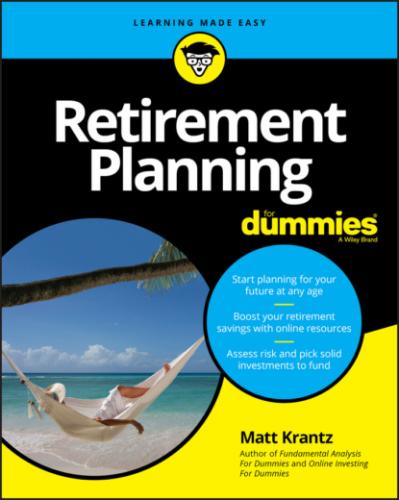Let’s go back to our 40-year-old male. He’s 6-feet tall, weighs 150 pounds, doesn’t touch alcohol, but does smoke. With that added detail, his life expectancy is now estimated to be 72.6 years, as shown in Figure 1-2.
FIGURE 1-1: Social Security’s Life Expectancy Calculator helps you see how your lifespan compares with others.
FIGURE 1-2: Bankrate’s Life Expectancy Calculator factors in more details to help you figure out how long you’ll go.
Living to 100 Life Expectancy Calculator
Your life expectancy is an important input in your retirement plan. It’s worthwhile to revisit this factor periodically and carefully. The Living to 100 Life Expectancy Calculator at http://www.livingto100.com brings rigor to this process.
The calculator, shown in Figure 1-3, asks a battery of questions covering everything from personal traits about your sleep patterns to lifestyle habits, nutrition, medical history, and family history. The calculator is free, but you need to set up an account with your email address.
FIGURE 1-3: Living to 100 Life Expectancy Calculator quizzes you with in-depth questions to estimate your lifespan.
Retirement Planning Beginnings: The Pension
As the U.S. industrialized, and farmers hung up their bib overalls and moved to work in factories, a major shift occurred in retirement planning. Workers would sign up with a company and pretty much assume they’d stay their entire careers. Over time, workers counted on their loyalty and decades of service to result in companies providing for them their entire lives — even after they retired.
Given what you know about lifespans, you can see why it wasn’t a huge deal for companies to take care of employees for life. Let’s say an employee in a steel mill worked until age 65. Look back at Table 1-1 and you’ll see that in the mid-1950s and the 1960s, he’d be expected to live only until 70. His company would have to provide retirement income for only five years.
Hence, the pension was born. In a pension plan, which is sometimes called a defined benefit plan, the employer commits to pay the pensioner a set amount of money each year after retirement. If employees stay with the company, they know how much income to expect.
During an employee’s working years, his or her employer would contribute to a fund. It was the company’s responsibility to not only add to the fund but also to prudently manage it with investments on the employees’ behalf. The company was required to hold and protect sufficient amounts of funds to pay pension proceeds. If the fund got low, typically because money was paid out faster than the fund grew, the company had to use part of its profits to refill the reserves. As you could imagine, investors weren't happy when this happened.
If you’ve recently joined the workforce, pension plans probably sound strange. But in the 1950s through the 1980s, most employees, especially those working for large companies, expected a pension. Pensions are still common for public employees but have largely vanished for everyone else. As of 2011, only 18 percent of private sector employees participated in a pension plan, according to the Bureau of Labor Statistics. That amount dropped to just 15 percent in 2017, according to an updated estimate from Pension Rights Center (www.pensionrights.org/publications/statistic/how-many-american-workers-participate-workplace-retirement-plans), and to 11 percent in 2018 according to the Employee Benefit Research Institute (www.ebri.org/docs/default-source/ebri-press-release/pr-1244-retplansff-6jun19.pdf?sfvrsn=98a83f2f_4).
So how are you supposed to plan for retirement if you don’t have a pension plan? That’s where our story takes us next.
Changing Times: The 401(k)
Those of you who were around in 1978 probably recall the debut of the Garfield comic strip. Another big milestone in 1978 was the end of production of the Volkswagen Beetle. But something far more important for retirement planning happened that year: The 401(k) was born.
The 401(k) is practically synonymous with retirement planning now because this plan is the predominant way most people save for retirement, especially those relatively new to the workforce. This popular retirement plan has steadily replaced the pension plan.
As mentioned, pension plans are defined benefit plans. The plan sponsor, typically the employer, promises the retiree a certain monthly or annual income in retirement. In contrast, 401(k) plans are defined contribution plans. The only thing that’s set is how much will be contributed to the plan. Typically, employees make most of the contributions. Contributions for standard 401(k) plans are generally made by paycheck deductions using pre-tax dollars; I cover exceptions in Chapter 4. (When you contribute to a 401(k), you lower your tax bill.) Many employers then make additional contributions, usually a matching percentage of what the employee puts in.
Why is the traditional 401(k) so powerful? The company match, if available, is great, but the main benefit is the tax-deferred contribution. Suppose you earn $100,000 and elect to contribute $10,000 to your 401(k). The $10,000 would be taken from your paycheck and not immediately taxed. Assuming that you're in the 24 percent tax bracket, you would not pay the $2,400 in tax that would have ordinarily been due the year the money was earned. Instead, the money is taxable in the future when you withdraw it in retirement. This deferral is a powerful tool in retirement planning.
